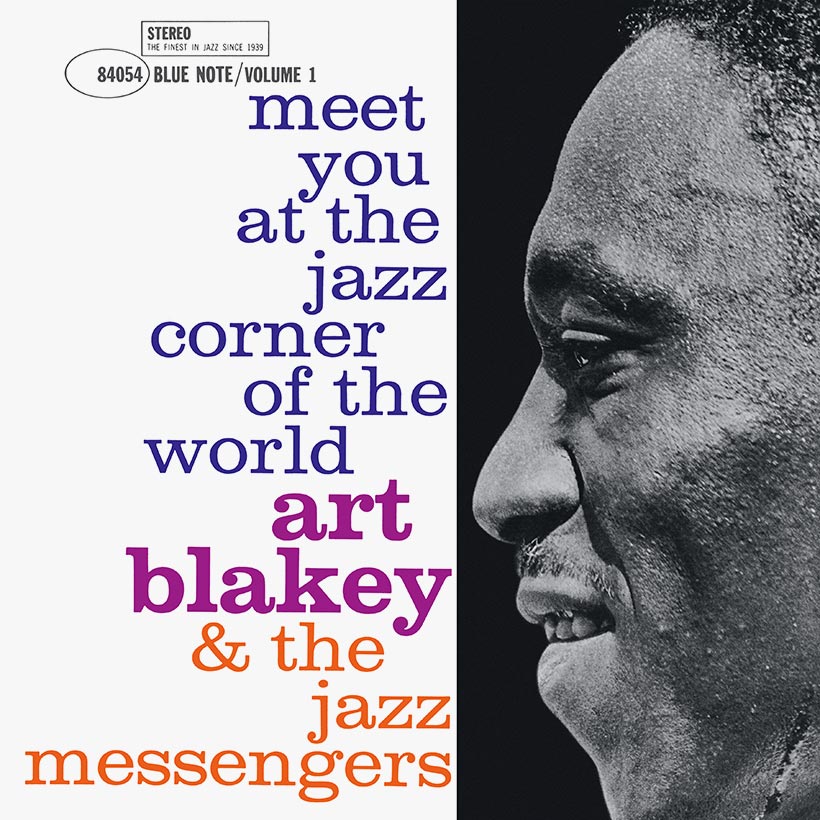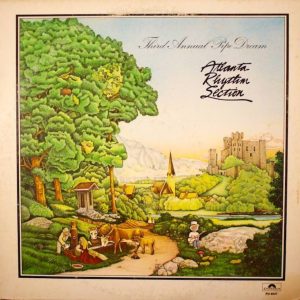For many followers of modern jazz, the quintet line-up of The Jazz Messengers that featured on Meet You At The Jazz Corner Of The World represents one of the greatest bands ever put together by drummer extraordinaire Art Blakey.
Listen to Meet You At The Jazz Corner Of The World on Apple Music and Spotify.
On trumpet, he had the young Philadelphia-born prodigy Lee Morgan, who had signed to Blue Note as a teenager in 1956 and joined the Messengers two years later. The other horn player in the band was New Jersey tenor saxophonist Wayne Shorter, who was recruited by Blakey in 1959 and made his recording debut with the group in November of that year. The piano chair was occupied by another native of The City Of Brotherly Love, Bobby Timmons, who made his debut on the Moanin’ album and also wrote its hugely popular title tune. He brought a soul-jazz sensibility to the group and joined the Messengers in 1958 at the same time as fellow Philadelphian, bassist Jymie Merritt.
Compared with Blakey, a seasoned veteran who was nearing his 41st birthday, they were all young men in their late 20s and at the dawn of their careers. But, under the mentorship of the avuncular drummer, they were getting a first-class education on the bandstand that would hold them in good stead for the rest of their lives.
Virtuosity as soloists
Birdland had been in existence for 11 years when Art Blakey took the latest inductees to his “Hard Bop Academy” there on the night of Wednesday, September 14, 1960. He had recorded at the legendary venue before, of course – leading the Art Blakey Quintet on the famous 1954 album A Night At Birdland, and with the Messengers on At The Jazz Corner Of The World, five years later – but Meet You At The Jazz Corner Of The World was his first live recording to feature rising saxophone star Wayne Shorter.
The night’s performance was first released on vinyl in two separate volumes by Blue Note. Volume 1 features five tracks and opens with the band playing an upbeat Lee Morgan tune, “What You Know.” It’s driven by Blakey’s famous shuffle groove, where the drummer leads with a ride cymbal while hitting the snare on the second and fourth beats of the bar. The tune is also memorable for a snaking solo from Wayne Shorter, who would soon eclipse Morgan by establishing himself as the Messengers’ leading composer.
“The Opener,” another slice of classic hard bop, follows and was written by Shorter’s predecessor in the Messengers, Hank Mobley. After the main theme is stated by the twin horns, each band member displays their virtuosity as soloists. Shorter starts in a robust fashion, followed by Morgan, whose trumpet tone is luminous, and then Timmons, whose fleet-fingered piano runs are mesmerizing. Then Blakey gets a chance in the spotlight, impressing with his crescendoing press rolls, before the main theme is reprised.
A formidable engine room
Thelonious Monk’s classic bebop ballad, “Round About Midnight,” begins with a spoken introduction by Blakey (who calls Monk the “High Priest Of Modern Jazz”). The music opens with dramatic drum rolls accompanying mysterious piano chords before Lee Morgan plays the song’s sinuous melody. The music ebbs and flows for a while but then Wayne Shorter’s saxophone solo, with its biting tone, brings a passionate intensity to the mood before it subsides for Bobby Timmons’ piano solo.
“The Breeze And I” is a song written by Cuban composer Ernesto Lecuona and American lyricist Al Stillman and is rendered by the Messengers at a free-swinging medium tempo. While it features commendable solos, it’s also notable for the impeccable way that Blakey and Jymie Merritt, who walks his bass, function as the formidable engine room of the rhythm section.
Volume 1 of Meet You At The Jazz Corner Of The World closes with a brief rendition of Miles Davis’ “The Theme,” over which Birdland’s diminutive MC, the legendary Pee Wee Marquette, introduces the band and urges the audience to applaud, exclaiming excitedly, “The soul brothers are talkin’ tonight!”
Surprising twists and turns
There was no dip in quality on the second volume of Meet You At The Jazz Corner Of The World, which features two Hank Mobley tunes: the slightly subdued “High Modes” (with Morgan playing muted trumpet) and the Latin-inflected “Night Watch,” which blooms into a pacy swinger. There’s also a jazz retooling of the tune “The Things I Love,” a Tin Pan Alley ballad by Harold Barlow and Lew Harris that was recorded by pop acts The Fidelity’s and Caterina Valente in the 50s.
Proving that replacing Hank Mobley had brought a new youthful vigor to the Messengers, Shorter then impresses with “The Summit,” one of his early compositions. It’s propelled by a turbo-charged rhythm on which Merritt’s fast-walking bass notes are perfectly in sync with Blakey’s propulsive polyrhythms. Shorter takes a long serpentine-like solo, and the track’s idiomatic melodic contours, with its surprising twists and turns, would become more familiar to jazz fans in the ensuing years.
“The Jazz Messengers is the star”
Though, in the eyes of many, Art Blakey – described by Marquette as “that talented master showman” – was seen as the Messengers’ head honcho, he was adamant that no individual received top billing. “I’ve got no room for no stars,” he once told an interviewer. “The Jazz Messengers is the star – all of us together. The leader of the band is Art Blakey and the star is the group. We do it together.”
That co-operative ethos was an underlying principle of Blakey’s concept for The Jazz Messengers, and the symbiosis the master drummer achieved with his trainees is what still makes Meet You At The Jazz Corner Of The World an exciting record today. That inherent tension between the wisdom of experience and the enthusiasm and vitality of youth creates a compelling musical synergy.
Meet You At The Jazz Corner Of The World has been reissued on vinyl as part of the Blue Note 80 series. Buy it here.




